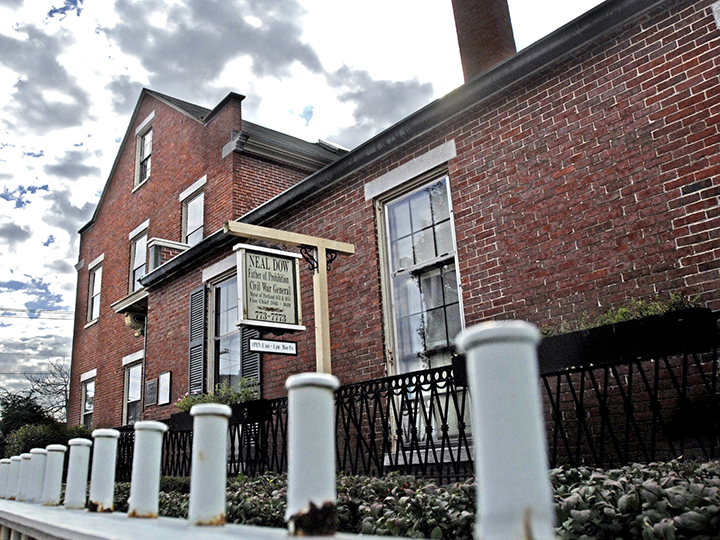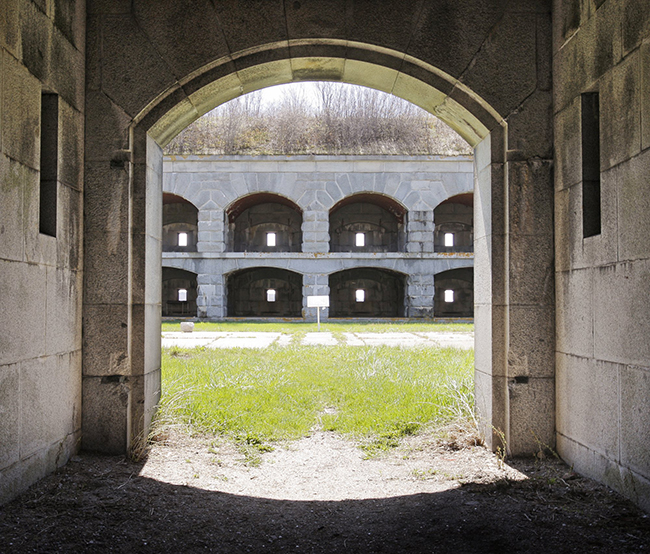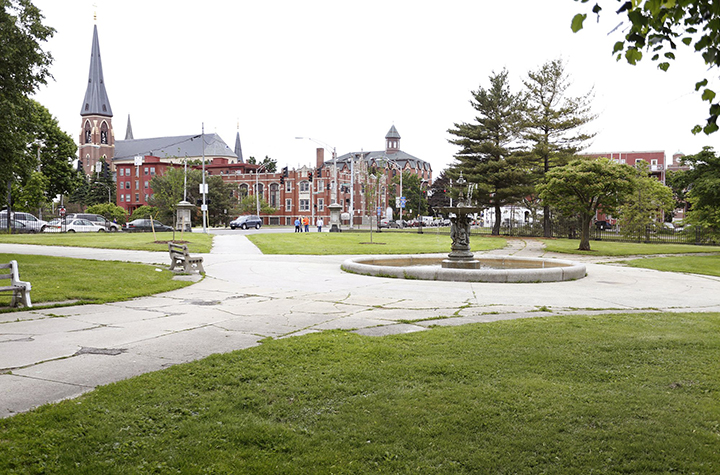PORTLAND — The two-story brick house on Congress Street has ties to many chapters in American history.
Its original owner, Neal Dow, was a Civil War general and an abolitionist who provided refuge to African-Americans who fled slavery.
Dow also was a leader in the temperance movement and drafted Maine’s law against the sale and consumption of alcohol. His law inspired other states to follow, leading to the 18th Amendment, and the era of Prohibition.
In 1934, Dow’s son turned the home over to the Maine Woman’s Christian Temperance Union, which used it as headquarters to advocate for social issues.
Now, the Dow House is in danger of falling into irreversible disrepair, says Greater Portland Landmarks, a nonprofit group that’s committed to preserving historic sites in the area.
The house is still owned by the temperance union and operated as a historic museum, but revenue from admissions isn’t enough to support operating costs and repairs.
It’s one of seven properties that Greater Portland Landmarks designated Tuesday as “Places in Peril.”
This is the second year the group has highlighted what it considers endangered properties.
“These properties help define Greater Portland,” said Hilary Bassett, the group’s executive director. “In every case, the properties we’ve identified are prominently visible or have such historic significance that we must advocate for their protection and preservation.
The other sites on the list are:
• Fort Gorges in Casco Bay. The fort, built after the Civil War, was a military storage facility during World Wars I and II. Today, it is overgrown with vegetation and shows signs of deteriorating masonry.
• Western Cemetery in Portland’s West End. The city-owned cemetery was Portland’s primary burying ground from 1829 to 1852 but is now minimally maintained and has been vandalized.
• Lincoln Park. Designed in 1866 between Congress and Federal streets, Portland’s oldest public park was neglected for years. It gained new prominence in 2011 when it became a home to the Occupy Wall Street movement. The encampment led to the formation of Friends of Lincoln Park, a group that is working with the city to preserve the space.
• The Ingraham Carriage Barn on High Street. The property is a rare surviving example of urban architecture from 1800. It is now owned by Goodwill Industries but is vacant and deteriorating quickly.
• Union Station Clock in Congress Square Plaza.
• The seventh site is not a place but the entire inventory of historic resources in South Portland. Bassett said Greater Portland Landmarks decided to highlight the entire city.
“The city has only three buildings on the historic registry, and two are lighthouses,” she said. “This is a great opportunity to conduct a survey to see what’s there and what needs to be protected.”
Greater Portland Landmarks created the list after soliciting nominations from public leaders, developers, preservationists and others.
Nate Stevens, a trustee for Greater Portland Landmarks who is a commercial real estate developer, said the link between historic preservation and economic development is proven.
“Being a broker, I see firsthand the importance of historic preservation,” he said. “Without historic buildings, we could be any other city in the country.”
Stevens said historic buildings make Portland attractive because many have features that are “conversation starters,” such as exposed brick interiors, wooden beams and ornate windows.
Last year, the preservation group identified seven properties, including the Masonic Temple on Congress Street, Eastern Cemetery and the Abyssinian Meeting House on Newbury Street.
Asked whether last year’s awareness campaign has spurred preservation of those sites, Bassett said progress has been made on several.
The Abyssinian Meeting House has been placed on the National Trust for Historic Preservation’s list of most endangered properties in the country.
Bassett said she believes this is the first time a Maine property has been included, and the listing has helped generate interest in a $1 million fundraising campaign to improve the building, the third-oldest African-American meeting house in the U.S. and a stop on the Underground Railroad.
Eastern Cemetery has received additional funding from the city since it was placed on Greater Portland Landmarks’ list last year.
Bassett said the biggest threat to many of the “Places in Peril” is maintenance and a lack of resources for upkeep. She said the success stories often come when volunteer groups work with property owners.
Eric Russell can be contacted at 791-6344 or at:
erussell@pressherald.com
Twitter: @PPHEricRussell
Send questions/comments to the editors.






Success. Please wait for the page to reload. If the page does not reload within 5 seconds, please refresh the page.
Enter your email and password to access comments.
Hi, to comment on stories you must . This profile is in addition to your subscription and website login.
Already have a commenting profile? .
Invalid username/password.
Please check your email to confirm and complete your registration.
Only subscribers are eligible to post comments. Please subscribe or login first for digital access. Here’s why.
Use the form below to reset your password. When you've submitted your account email, we will send an email with a reset code.